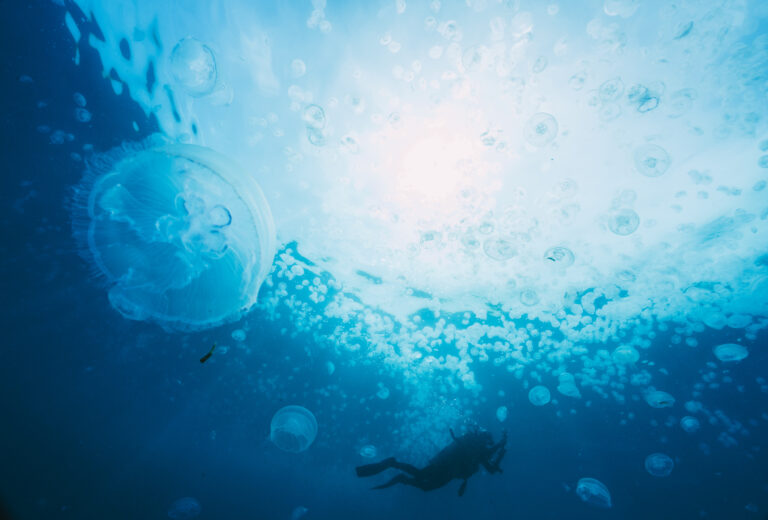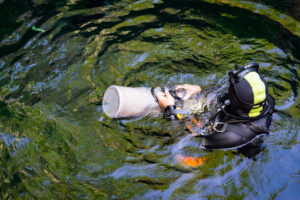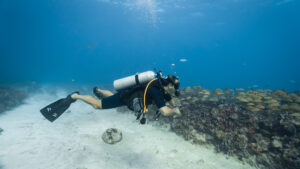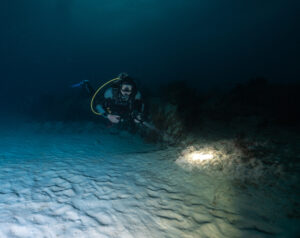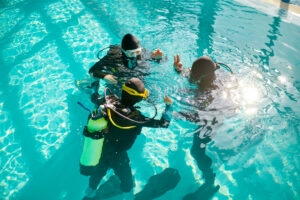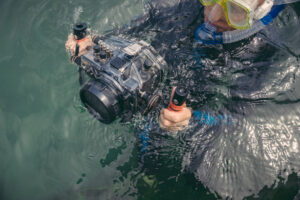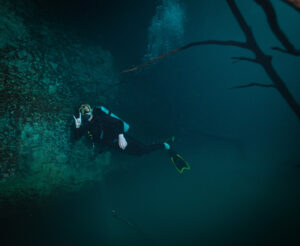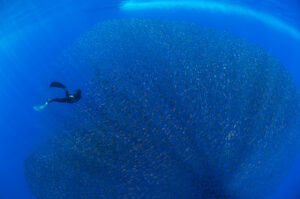What is a Giant Stride Entry?
The giant stride entry is the most common and efficient method for scuba divers to enter the water, particularly from a boat or a platform. This technique allows divers to maintain control over their equipment and body position while minimizing the risk of injury. The giant stride entry is favored by divers for its simplicity, effectiveness, and ease of execution. The following entry will provide a comprehensive overview of the giant stride entry, detailing its origins, execution, safety considerations, and variations.
Origins
The giant stride entry has its roots in early scuba diving practices. As the sport evolved and divers sought to enter the water in a more controlled and efficient manner, the giant stride entry emerged as a popular and practical solution. While the exact origins of the technique are unclear, it is widely believed that it was developed by experienced divers seeking to reduce the risk of injury when entering the water with heavy scuba gear.
Execution
To perform the giant stride entry, a diver must follow a series of carefully coordinated steps:
Preparation
Before approaching the edge of the boat or platform, the diver should ensure that all equipment is properly secured and adjusted. This includes checking the buoyancy compensator (BC), regulator, and mask. Additionally, the diver should don the fins and ensure they are securely attached.
Positioning
The diver should approach the edge of the boat or platform, standing with one foot near the edge and the other slightly behind. The diver’s body should be facing the water, with arms bent at the elbows and hands securely holding the mask and regulator in place.
The stride
With a firm grip on the mask and regulator, the diver takes a large step forward with the rear foot, extending the leading foot out over the water. The stride should be confident and forceful, propelling the diver away from the boat or platform.
Entry
As the diver’s leading foot enters the water, the chin should be tucked to the chest to prevent the mask from being dislodged. Simultaneously, the diver should bring the fins quickly together, allowing for a controlled descent into the water.
Descent
Once fully submerged, the diver should establish neutral buoyancy and perform a final equipment check before continuing with the dive.
Safety Considerations
The giant stride entry is generally considered to be a safe and effective method for entering the water. However, divers should always exercise caution and follow proper safety protocols to minimize the risk of injury:
- Always perform a pre-dive equipment check to ensure all gear is properly functioning and securely attached.
- Never attempt the giant stride entry if the boat or platform is unstable or if there are hazardous conditions, such as strong waves or currents.
- Always maintain a firm grip on the mask and regulator during the entry to prevent them from being dislodged.
- Enter the water at a controlled speed to minimize the risk of injury or equipment damage.
- Always perform the giant stride entry with a buddy or under the supervision of a certified dive professional.
Variations
While the giant stride entry is the most common method for entering the water, divers may also employ several variations to suit different conditions or personal preferences:
Seated entry
If the boat or platform has a low edge, divers may opt to sit on the edge with their legs extended over the water, then push off with their hands to enter the water.
Backward roll entry
For divers entering the water from a small boat or inflatable vessel, a backward roll entry may be more appropriate. In this method, the diver sits on the edge of the boat facing inward, then leans backward to roll into the water.
Controlled seated entry
This variation involves sitting on the edge of the boat or platform and sliding gently into the water, maintaining control of the mask, regulator, and fins throughout the entry. This method is ideal for divers who are less confident with the giant stride entry or for those with physical limitations.
Shore entry
When diving from a shoreline, the giant stride entry may not always be feasible. In these cases, divers can walk or wade into the water while wearing their equipment, or perform a surface swim out to the dive site before descending.
Ladder entry
Some boats and platforms are equipped with ladders for divers to use when entering the water. In this variation, the diver descends the ladder while maintaining control of their mask, regulator, and fins, before letting go and submerging.
Adaptability and Skill Development
The giant stride entry is a fundamental skill for scuba divers, and mastering this technique is essential for safe and enjoyable diving experiences. Divers should practice the giant stride entry in controlled environments, such as swimming pools or sheltered shorelines, before attempting the technique in open water or from a boat.
As divers gain experience and confidence, they may adapt and modify the giant stride entry to suit their individual needs and preferences. The ability to execute a smooth and controlled entry into the water not only enhances the overall diving experience but also contributes to the diver’s safety and the preservation of the marine environment.
Key Takeaways
The giant stride entry is a crucial component of scuba diving, enabling divers to enter the water efficiently and safely. By understanding and mastering this technique, divers can ensure that their underwater adventures begin on the right foot, setting the stage for an enjoyable and rewarding experience.

